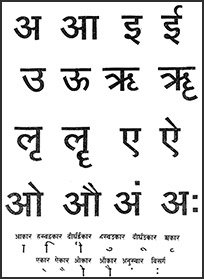Veshtaka, Vēṣṭaka, Veṣṭaka: 12 definitions
Introduction:
Veshtaka means something in Hinduism, Sanskrit, Marathi. If you want to know the exact meaning, history, etymology or English translation of this term then check out the descriptions on this page. Add your comment or reference to a book if you want to contribute to this summary article.
The Sanskrit terms Vēṣṭaka and Veṣṭaka can be transliterated into English as Vestaka or Veshtaka, using the IAST transliteration scheme (?).
In Hinduism
Vyakarana (Sanskrit grammar)
Source: Wikisource: A dictionary of Sanskrit grammarVeṣṭaka (वेष्टक).—lit. enclosure or envelope; the term is used in the sense of परिग्रहं (parigrahaṃ) with reference to the repetition of one and the same word more than once in the Krama and other artificial recitals; cf. परिग्रहे त्वनाषीन्तात् तेन वैकाक्षरीकृतात् । परॆषां न्यास-माचारं, व्यालिस्तौ चेत् स्वरौ परौ ॥ (parigrahe tvanāṣīntāt tena vaikākṣarīkṛtāt | paraॆṣāṃ nyāsa-mācāraṃ, vyālistau cet svarau parau ||) on which Uvvata remarks परिग्रहे वेष्टके (parigrahe veṣṭake).

Vyakarana (व्याकरण, vyākaraṇa) refers to Sanskrit grammar and represents one of the six additional sciences (vedanga) to be studied along with the Vedas. Vyakarana concerns itself with the rules of Sanskrit grammar and linguistic analysis in order to establish the correct context of words and sentences.
Kavya (poetry)
Source: archive.org: Naisadhacarita of SriharsaVeṣṭaka (वेष्टक) in “naveṣṭakaveṣṭanā” is mentioned in the Naiṣadha-carita 19.16.—Translation follows the construction nava + iṣṭaka. But Cāṇḍūpaṇḍita construes the expression also as “na veṣṭakaveṣṭanā” and explains veṣṭaka as a kind of resin used for catching birds. He gives cepa as an equivalent. See notes. Cāṇḍū’s explanation is ofund also in Īśānadeva and Jinarāja, but the latter two give another very curious meaning of veṣṭaka—“latrine”!

Kavya (काव्य, kavya) refers to Sanskrit poetry, a popular ancient Indian tradition of literature. There have been many Sanskrit poets over the ages, hailing from ancient India and beyond. This topic includes mahakavya, or ‘epic poetry’ and natya, or ‘dramatic poetry’.
Languages of India and abroad
Marathi-English dictionary
Source: DDSA: The Molesworth Marathi and English Dictionaryvēṣṭaka (वेष्टक).—a S That environs, encompasses, surrounds, wraps, covers.
Source: DDSA: The Aryabhusan school dictionary, Marathi-Englishvēṣṭaka (वेष्टक).—a That environs, wraps.
Marathi is an Indo-European language having over 70 million native speakers people in (predominantly) Maharashtra India. Marathi, like many other Indo-Aryan languages, evolved from early forms of Prakrit, which itself is a subset of Sanskrit, one of the most ancient languages of the world.
Sanskrit dictionary
Source: DDSA: The practical Sanskrit-English dictionaryVeṣṭaka (वेष्टक).—[veṣṭ-ṇvul]
1) An enclosure, a fence.
2) A pumpkin-gourd.
3) (In gram.) Putting a word before and after इति (iti).
-kam 1 A turban.
2) A wrapper, mantle.
3) Gum, exudation.
4) Turpentine.
Derivable forms: veṣṭakaḥ (वेष्टकः).
--- OR ---
Veṣṭaka (वेष्टक).—A particular position in copulation.
Derivable forms: veṣṭakaḥ (वेष्टकः).
See also (synonyms): veṣṭanaka.
Source: Cologne Digital Sanskrit Dictionaries: Edgerton Buddhist Hybrid Sanskrit DictionaryVeṣṭaka (वेष्टक).—nt. (Sanskrit Lex. turban), according to Tibetan seṅ ras, white (or, thin) (cotton) cloth: Mahāvyutpatti 5875. But Chin. linen cloth (no color word).
Source: Cologne Digital Sanskrit Dictionaries: Shabda-Sagara Sanskrit-English DictionaryVeṣṭaka (वेष्टक).—mfn.
(-kaḥ-kā-kaṃ) Surrounding, a surrounder, that which encompasses or encloses. n.
(-kaṃ) 1. A turban. 2. Exudation, resin gum, &c. 3. Turpentine. m.
(-kaḥ) 1. A wall, a fence. 2. A pumpkingourd. E. veṣṭa, with kan added; or veṣṭ to surround, aff. vun or ṇvul .
Source: Cologne Digital Sanskrit Dictionaries: Benfey Sanskrit-English DictionaryVeṣṭaka (वेष्टक).—[veṣṭ + aka], I. adj. Surrounding, a surrounder. Ii. m. 1. A wall, a fence. 2. A pumpkin gourd. Iii. n. 1. A turban. 2. Resin. 3. Turpentine.
Source: Cologne Digital Sanskrit Dictionaries: Monier-Williams Sanskrit-English Dictionary1) Veṣṭaka (वेष्टक):—[from veṣṭ] m. See aṅguli-v
2) [v.s. ...] a wall, fence, [Horace H. Wilson]
3) [v.s. ...] (in gram.) putting a word before and after iti, [Vājasaneyi-saṃhitā-prātiśākhya]
4) [v.s. ...] Beninkasa Cerifera, [cf. Lexicographers, esp. such as amarasiṃha, halāyudha, hemacandra, etc.]
5) [v.s. ...] mn. turpentine, [cf. Lexicographers, esp. such as amarasiṃha, halāyudha, hemacandra, etc.]
6) [v.s. ...] n. a head-band, turban, [cf. Lexicographers, esp. such as amarasiṃha, halāyudha, hemacandra, etc.]
7) [v.s. ...] resin, gum, [cf. Lexicographers, esp. such as amarasiṃha, halāyudha, hemacandra, etc.]
8) [v.s. ...] mfn. who or what encompasses or surrounds, [Horace H. Wilson]
Source: Cologne Digital Sanskrit Dictionaries: Yates Sanskrit-English DictionaryVeṣṭaka (वेष्टक):—[(kaḥ-kā-kaṃ) n.] A turban; gum; turpentine. m. A wall; a pumpkin, gourd. a. Surrounding.
Source: DDSA: Paia-sadda-mahannavo; a comprehensive Prakrit Hindi dictionary (S)Veṣṭaka (वेष्टक) in the Sanskrit language is related to the Prakrit word: Veḍḍhaya.
[Sanskrit to German]
Sanskrit, also spelled संस्कृतम् (saṃskṛtam), is an ancient language of India commonly seen as the grandmother of the Indo-European language family (even English!). Closely allied with Prakrit and Pali, Sanskrit is more exhaustive in both grammar and terms and has the most extensive collection of literature in the world, greatly surpassing its sister-languages Greek and Latin.
See also (Relevant definitions)
Starts with: Veshtakam.
Ends with: Anguliveshtaka, Apakveshtaka, Aveshtaka, Dantaveshtaka, Diliveshtaka, Durveshtaka, Karnaveshtaka, Naveshtaka, Pakveshtaka, Pariveshtaka, Praveshtaka, Shaalmali-veshtaka, Shalmaliveshtaka, Shriveshtaka, Veshtanaveshtaka.
Full-text: Karnaveshtaka, Aveshtaka, Dantaveshtaka, Shalmaliveshtaka, Shaalmali-veshtaka, Veshtakam, Karnaveshtakiya, Veshtanaka, Sampatveshtakam, Anguliveshtaka, Veddhaya, Cuvekam, Shriveshtaka, Veshtanaveshtaka, Karnaveshtakika, Akarnaveshtakika, Vagara, Parigraha, Upasthita.
Relevant text
Search found 3 books and stories containing Veshtaka, Vēṣṭaka, Veṣṭaka, Vestaka; (plurals include: Veshtakas, Vēṣṭakas, Veṣṭakas, Vestakas). You can also click to the full overview containing English textual excerpts. Below are direct links for the most relevant articles:
Sushruta Samhita, volume 2: Nidanasthana (by Kaviraj Kunja Lal Bhishagratna)
Sushruta Samhita, volume 4: Cikitsasthana (by Kaviraj Kunja Lal Bhishagratna)
Sushruta Samhita, Volume 6: Uttara-tantra (by Kaviraj Kunja Lal Bhishagratna)
Chapter XL - Symptoms and treatment of Diarrhea (Atisara) < [Canto III - Kaya-chikitsa-tantra (internal medicine)]